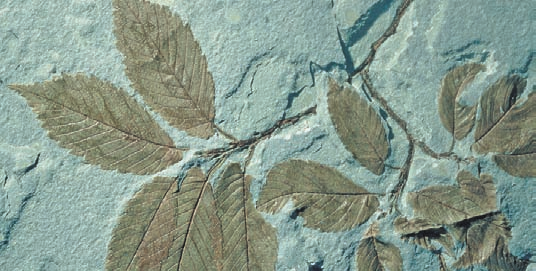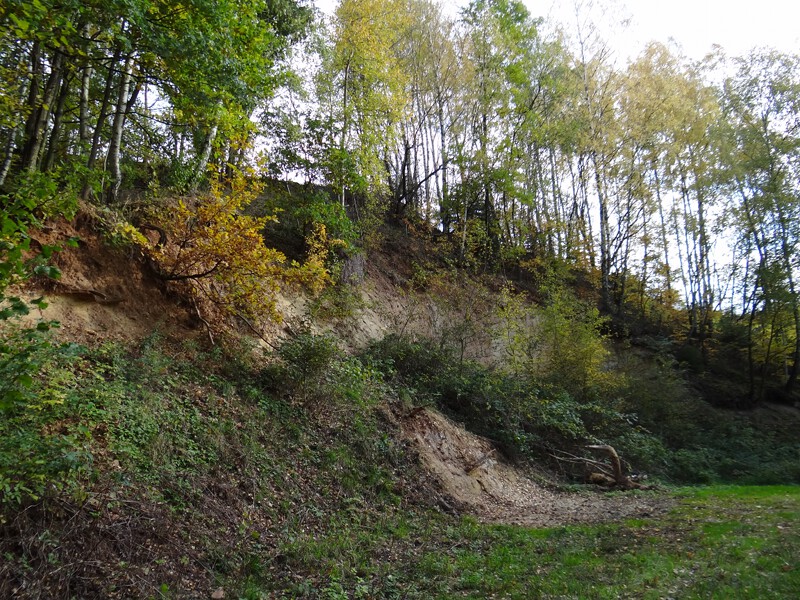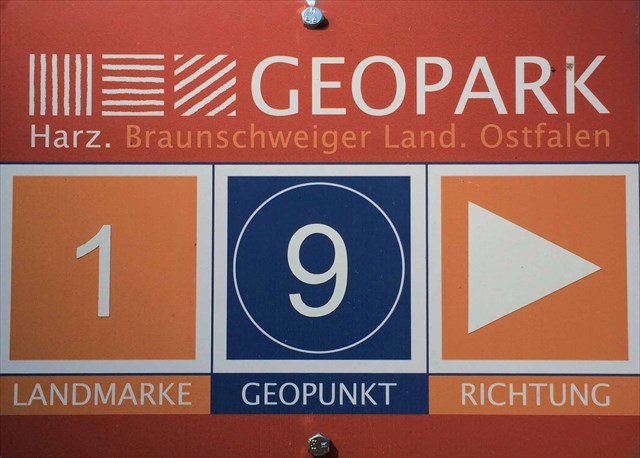Die Fossilien-Funde aus der ehemaligen Tongrube Willershausen stehen seit Anfang des 20. Jh. im besonderen Interesse der Geologie und Paläontologie.
Vor ca. 3 Mio. Jahren befand sich an der Stelle der Tongrube ein kleiner Teich, an dessen Grund sich über einen Zeitraum von 300 Jahren Überreste von Pflanzen und Tieren sammelten und die berühmte Fossilienfundschicht von Willershausen bildeten.
Besonders gute Erhaltungsbedingungen – sogar Chlorophyll-Reste konnten nachgewiesen werden – erlauben hier einen umfangreichen und weltweit äußerst seltenen Einblick in die tertiärzeitliche Pflanzen- und Tierwelt des Pliozäns, der Epoche vor der letzten großen Eiszeit.
Fossilien:
Über 50.000 Fossilien konnten geborgen werden. Die Lebewelt war damals viel artenreicher als heute, obwohl das Klima dem Heutigen entsprach.
Viele der fossilen Arten sind erst durch die Eiszeit aus Europa verdrängt worden. Sie kommen heute nur noch in Südostasien und in Nordamerika vor, wie Ginkgo, Magnolie, Zypresse und Lorbeer als Beispiele aus dem Pflanzenreich sowie Wasserschildkröte, Riesensalamander und Tapir aus dem Tierreich.
Die Fossilien aus der Tongrube Willershausen befinden sich weltweit verstreut in Sammlungen und Museen. Den Hauptteil der Fundstücke besitzt das Geologische Institut der Universität Göttingen.

Fossiles Blatt aus der Tongrube Willershausen mit Chlorophyll-Erhaltung.
(Foto: Staatl. Museum für Naturkunde in Stuttgart)
1977 wurde die Tongrube, die seit Einstellung des Ziegeleibetriebes Eigentum des Landkreises Northeim ist, als Naturdenkmal unter Schutz gestellt und durch einen hohen Zaun gesichert. Der Zaun bewahrt vor zerstörerischen Eingriffen und schützt Menschen davor, von Steilhängen zu stürzen oder in sumpfige Wasserlöcher zu rutschen.

Seit Januar 2012 ist das Naturdenkmal Tongrube Willershausen als Geopunkt in den Geopark Harz – Braunschweiger Land – Ostfalen aufgenommen.

Bei Interesse an einer Führungen & Besichtigungen
Das Naturdenkmal Tongrube Willershausen und das Fossilien-Zimmer können nach vorheriger Terminvereinbarung ganzjährig besichtigt werden.
Terminvereinbarungen:
Heimatverein Willershausen e.V., Heiko Jäckel (Tel.: 05553-4963, E-Mail: vorstand@willershausen-harz.de).
Eine Führung dauert ca. 1½ -2 Stunden. Individuelle Anpassungen sind möglich.
Weitere Informationen über den Heimatverein Willershausen e.V. E-Mail: info@willershausen-harz.de oder die Homepage www.willershausen-harz.de
(Bilder und Texte mit freundlicher Genehmigung des Heimatvereins Willershausen e.V.)
Englisch:
The fossil finds from the Willershausen Clay Quarry have been of special geologic and palaeontologic interest since the beginning of the 20th century.
The site of the clay quarry used to hold a small lake around 3 million years ago, at the bottom of which the remainders of flora and fauna gathered over the course of 300 years, thus forming the famous layer of fossil finds at Willershausen.
Favorable preservation conditions, where even small amounts of chlorophyll can still be detected in the fossils, now allow us to get a rare glimpse into the flora and fauna more specifically the Pliocene, which was the epoch before the last great ice age.
Fossils:
More than 50,000 fossils have been found thus far. Earth was a lot richer in species during the Pliocene than it is today, even though the climate then was very similar to ours today.
Many of the animal and plant types of which fossils were found were driven away from Europe during the ice age, and can only be found in South-East Asia and North America today. Examples are plants like the ginkgo, magnolia, cypress, or laurel, and animals like the terrapin, giant salamander, and tapir.
The fossil finds from the Willershausen Clay Quarry can be found in collections and museums all around the world, with the majority of the finds being the property of the Geological Institute at the University of Goettingen.

Fossil leaf with chlorophyll residue from the Willershausen Stone Quarry .
(picture source: State Museum of Natural History Stuttgart)
The clay quarry became property of the District of Northeim after the brick works were discontinued, and was made a natural landmark in 1977. It is surrounded by a large fence to protect it from destructive invasion, and to protect visitors from falling off ledges or sliding into swampy water holes.

The Willershausen Clay Quarry Natural Landmark was added to the Harz Mountains-Brunswick Land-Eastphalia Geopark as a Geopointin 2012.

At interested on Guided Tours & Visits
The Willershausen Clay Quarry Natural Landmark and the Fossil Room can be visited by appointment all year round.
To book a tour or visit:
Contact Mr Heiko Jaeckel at Heimatverein Willershausen e.V either by phone: +49 (0) 5553 4963, or by email: vorstand@willershausen-harz.de. Guided tours take around 1.5 to 2 hours, but individual adjustments can be made.
For more information on the Heimatverein Willershausen e.V email info@willershausen-harz.de or visit www.willershausen-harz.de.
(photos and texts courtesy of Heimatverein Willershausen e.V.)